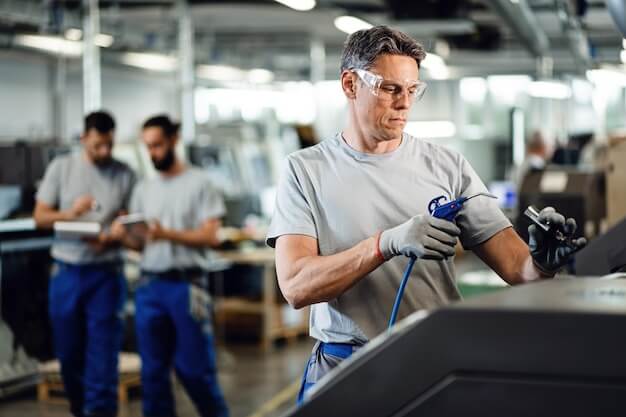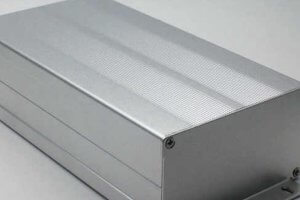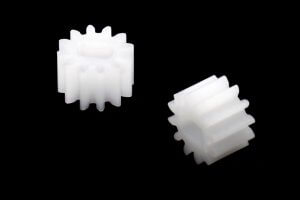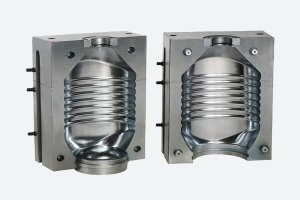Custom Precision Machining with Titanium for Aerospace Applications
The advent of custom precision machining has marked a significant leap in the aerospace industry, particularly with the incorporation of titanium. Custom precision machining is a process that involves creating parts, components or structures with a high level of accuracy and exactness tailored to specific requirements. Fundamentally known for its superior strength-to-weight ratio, corrosion resistance, temperature resilience, and biocompatibility, titanium emerges as an indispensable material in the crafting of essential elements within the aerospace domain.
Titanium serves various critical functions in aerospace applications such as:
- Engine Components: Due to its lightweight and heat-resistant nature, titanium is often used in engine components, ensuring optimum performance even under extreme temperatures.
- Airframe Structures: Corrosion resistance coupled with durability makes titanium ideally suited for crafting airframe structures, lending longevity and safety.
- Landing Gear: Its robust yet light characteristics make titanium a preferred choice in manufacturing landing gears, contributing to overall weight reduction thus increasing fuel efficiency.
The utilization of custom precision machining with titanium brings about increased reliability, sturdiness, and safety in the structure of aerospace objects, marking its significance in this advanced field.
Basics of Titanium
Titanium is a lustrous metallic element with excellent strength-to-weight ratio, making it ideal for manufacturing. It’s lightweight yet incredibly durable, prompting its widespread use in aerospace applications where weight and durability are critical. Remarkably resistant to corrosion from sea water and chlorine – titanium ensures longevity under harsh environmental conditions. Moreover, the high melting point of over 1600 degrees Celsius enables it for heat-intensive applications.
- Lightweight: Titanium has exceptional strength-to-weight features which makes it highly beneficial for aircraft structures that require both lightness and strength.
- Durability: Known for its incredible durability, it can withstand massive strains without degrading or breaking, ensuring long-term performance.
- Corrosion-Resistant: Exceptional resistance against corrosion, particularly by seawater and chlorine, increases service life span even in unfavourable environments.
- High Melting Point: With a melting point above 1600°C, titanium can endure extensive heat stress, making it outstandingly suitable for engines & other high-temperature areas in aerospace applications.
Custom precision machining with titanium for aerospace applications involves a meticulous process to ensure the highest quality and performance of the machined parts. The first step is to select the appropriate grade of titanium based on the specific requirements of the aerospace component. Once the material is chosen, the next step involves designing the part using CAD software, taking into account the capabilities of standard CNC milling tools. It is important to avoid specifications that require custom or specialty tools to minimize time and cost. Additionally, sharp internal corners should be avoided, and deep, narrow slots or pockets should be designed within certain ratios based on the material being machined. Designing the largest allowable internal radii can also reduce machining time and costs.
The Critical Role of Titanium in Aerospace Applications
Titanium plays an indisputable role in aerospace applications owing to its unique characteristics. Predominantly, the high strength-to-weight ratio of titanium makes it a valuable asset for these specific applications, providing structural integrity without adding excessive weight. This metal can withstand extreme temperatures and corrosive environments that are typically encountered within the aerospace industry.
A practical example demonstrating the importance of titanium lies in jet engine manufacturing. The following three reasons illustrate this:
- Durability: Jet engines need materials with excellent durability to withstand intense pressure and temperature variations. The superior toughness per density unit offered by titanium fulfills this requirement.
- Rust resistance: Being resistant to rust, titanium components assure longevity in the harsh climatic conditions common at high altitudes.
- High melting point: With a melting point over 3,000 degrees Fahrenheit, titanium reduces risks related to overheating during flights.
Advantages of Using Titanium for Custom Precision Machining in Aerospace
Titanium’s unique properties make it a preferred material for custom precision machining, particularly in the demanding aerospace industry. Among its noteworthy advantages are high tensile strength and lightness of weight which greatly reduce fuel consumption on aircrafts. Also worth mentioning is titanium’s remarkable resistance against corrosion and extreme temperatures, making components created with this metal more durable and less prone to damage.
- The construction of jet engines offers an ideal showcase of these benefits: using titanium has led to lighter, yet stronger engine parts that can withstand higher internal temperatures, thereby extending component life spans significantly.
- In satellite manufacture, titanium brings enhanced performance owing to its stability in temperature swings of outer space, contributing to extended orbital longevity of satellites.
- For spacecraft design as well, leveraging titanium constructs essentially enhance safety by reducing the risk of structural failure during launch due to heat or pressure conditions.
In essence, the use of titanium in custom precision machining enriches aerospace applications from commercial aircrafts to expeditionary explorations with strength, resilience and cost-effectiveness.
Challenges Faced in Titanium Custom Precision Machining
In the realm of aerospace applications, titanium custom precision machining poses a number of technical challenges. Despite its superior strength-to-weight ratio and resistance to corrosion – factors crucial for aviation components, working with titanium is not without its difficulties. One primary concern is titanium’s high heat resistance. While beneficial in-flight, this attribute increases tool wear during machining operations. High-speed cutting or drilling into titanium generates intense heat which can significantly degrade and shorten the lifespan of machine tools.
- Material Elasticity: Another challenge lies in titanium’s elasticity which causes it to flex or bend away from cutting tools, making it difficult to achieve desired dimensional accuracy.
- Cost Factor: The inherent costliness associated with titanium due to its complex extraction process also paves way for budgetary concerns.
- Adaptive Manufacturing: Lastly, adapting existing manufacturing processes to effectively machine titanium while ensuring minimal errors can often pose significant obstacles.
A perfect example would be when attempting a simple drilling operation on a titanium component. Conventional speeds can cause excess tool wear and resultantly frequent replacements, raising both production costs and time. Slowing down the process might ensure proper tool lifespan but will facilitate lower productivity. Hence, balancing quality machining and operational efficiency remains a continuous struggle while handling titanium custom precision machining.
Overcoming Challenges of Titanium Machining
The unique qualities of titanium – high strength, light weight, and corrosion resistant material, make it an excellent choice for aerospace applications, but the same properties also pose machining challenges. The primary difficulty in titanium precision machining is its propensity to overheat during processes due to its low thermal conductivity, leading to increased wear on tools.
Solving these challenges requires the development of strategic best practices in handling titanium. A critical practice involves appropriate tool selection; heat-resistant super alloys (HRSAs) are ideal given their ability to endure high temperatures without losing hardness. Besides cutting speed should be moderated to allow for efficient chip evacuation whilst minimizing the creation of excessive heat. Using larger radius inserts can also distribute heat over a large area, decreasing notch-wear. Additionally, deploying through-tool coolant methods helps directly cool the workpiece at the cut zone thereby reducing overall temperature and aiding in chip evacuation.
An effective example of this would be Boeing’s 787 Dreamliner aircraft where extensive use of titanium was made possible by overcoming such machining difficulties using strategies like controlled peripheral milling with right-angled shoulders and tough carbide grades that resist notch wear under unfavorable conditions making it an exemplar model in the aerospace industry concerning titanium precision machining.
The Future of Titanium in Custom Precision Machines for Aerospace
In the foreseeable future, titanium is expected to dominate custom precision machining in the aerospace sector, due its unique combination of desirable properties such as high strength-to-weight ratio, resistance to harsh environment, and excellent durability. With advancements in technology, we predict a rise in the production of lighter, more efficient, and cost effective titanium components. This can be achieved through newer manufacturing technologies like additive manufacturing that allow for complex designs once deemed impractical or impossible with traditional manufacturing methods.
- One key trend will involve developing innovative methods for reducing time and costs linked to machining titanium, thereby making it even more appealing for aerospace applications.
- Another plausible development could focus on alloying titanium with other materials to enhance specific characteristics like heat resistance or reduce weight further without compromising toughness; presenting significant opportunities for engineers designing next-generation aircrafts and spacecrafts.
- In addition, breakthroughs in treatments and coatings may permit us to extract even better performance from this already versatile metal.
All these predictions underline that titanium’s role in custom precision machines for aerospace applications looks set to grow impressively over the coming years.
Conclusion
In conclusion, custom precision machining with titanium proves to be essential for aerospace applications. The inherent qualities of titanium such as high strength-to-weight ratio, superior corrosion resistance, and excellent heat endurance make it a preferred choice in the manufacturing of aerospace components. Furthermore, when coupled with precision machining – where highly accurate cutting techniques are employed, the results yield parts that can withstand extreme conditions typical of aerospace environments.
- Titanium’s adaptability allows engineers to design complex yet lightweight structural elements enhancing aircraft performance.
- The sustainability aspect of titanium also plays a significant part as its recyclable nature promotes eco-friendly manufacturing processes.
- The use of modern technologies like computer-aided design (CAD) and computer numerical control (CNC) further heightens the efficiency and accuracy of machining process using titanium.
This food-for-thought culminates with prospective developments like additive manufacturing or 3D printing where titanium has already started making strides offering enormous potential for future aerospace productions.
Other Articles You Might Enjoy
- Custom Precision Machining in Stainless Steel for Complex Components
Custom Precision Machining in Stainless Steel The term 'custom precision machining in stainless steel' refers to a manufacturing process that involves the removal of material from a workpiece to create…
- CNC Machining with Plastics: POM vs. PEEK - Which is More Efficient?
CNC Machining in Manufacturing and the Utilization of Plastics In today's advanced manufacturing industry, CNC (Computer Numerical Control) machining continues to play an integral role. This technology helps in creating…
- Innovative CNC Machining for Advanced Spacecraft Components
Introduction: CNC Machining and its role in Spacecraft Components Computer Numerical Control (CNC) machining has, over the years, proven to be one of the most integral pillars within manufacturing industries.…









